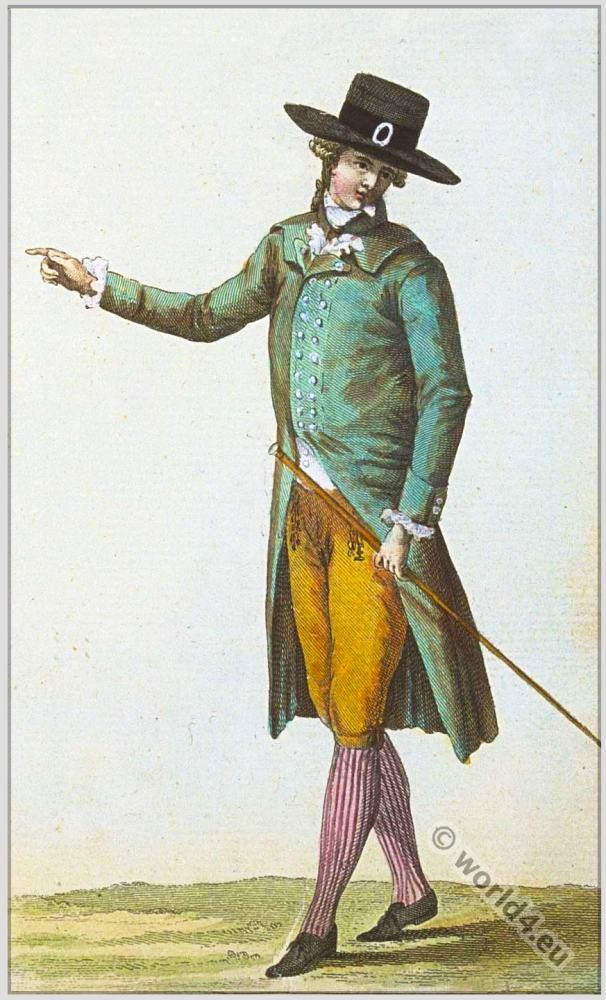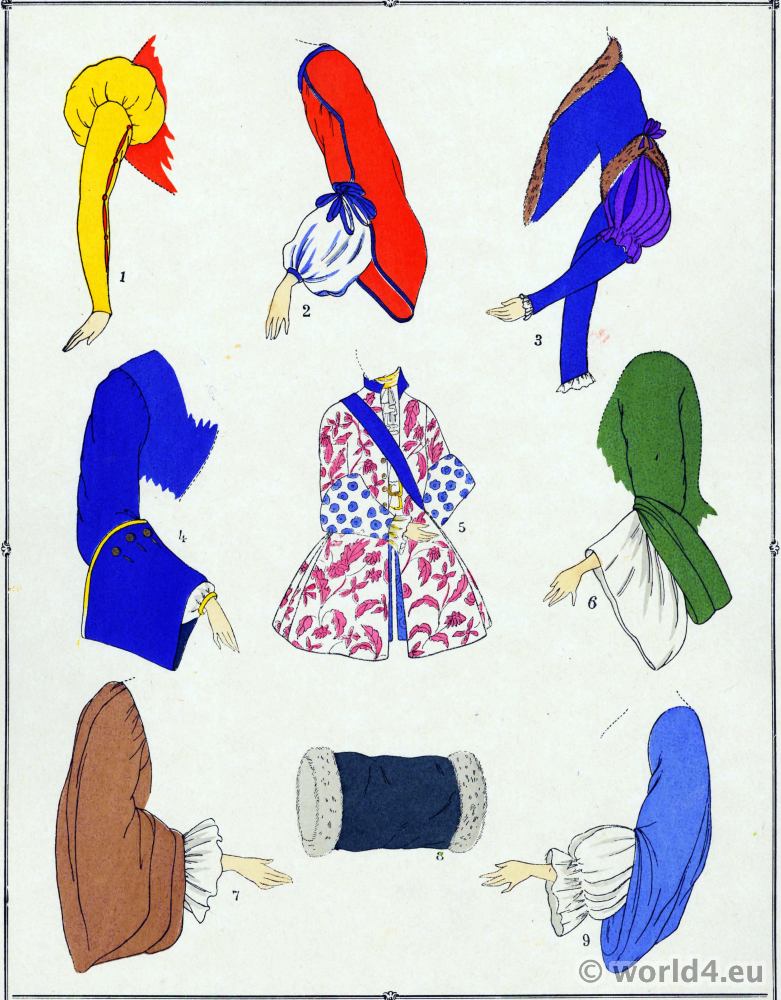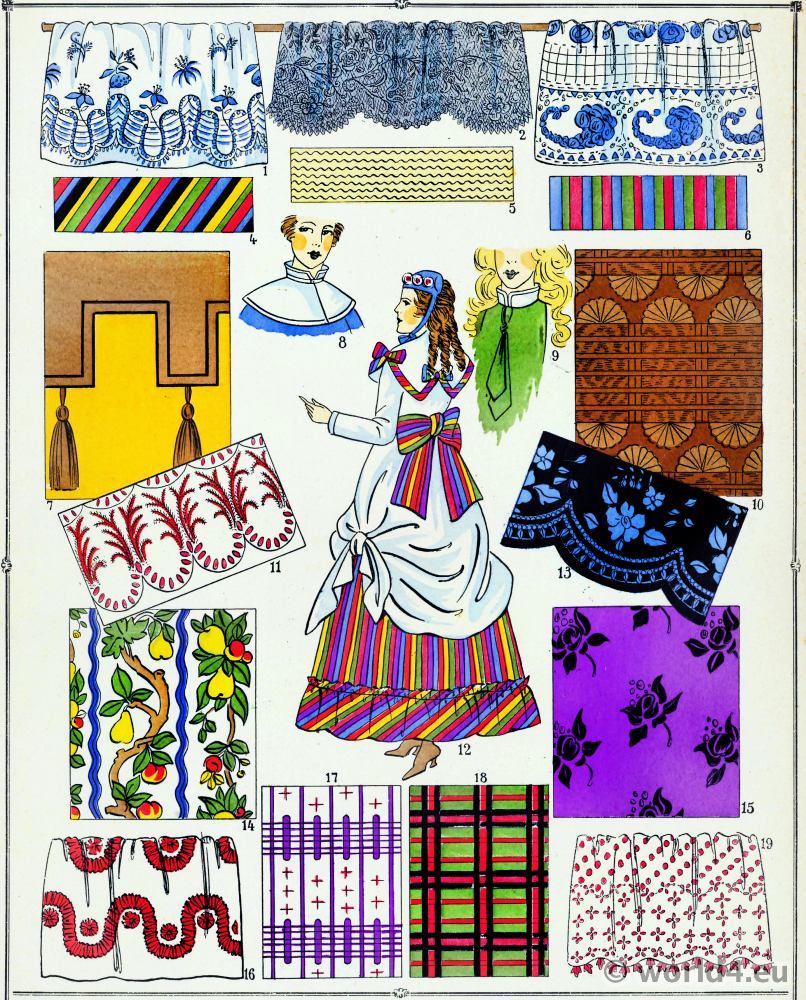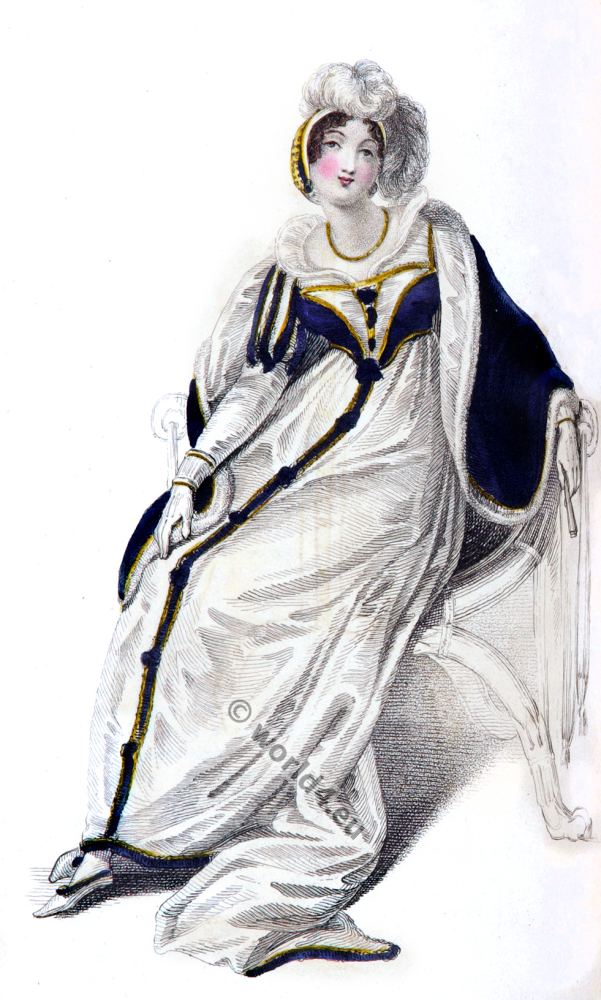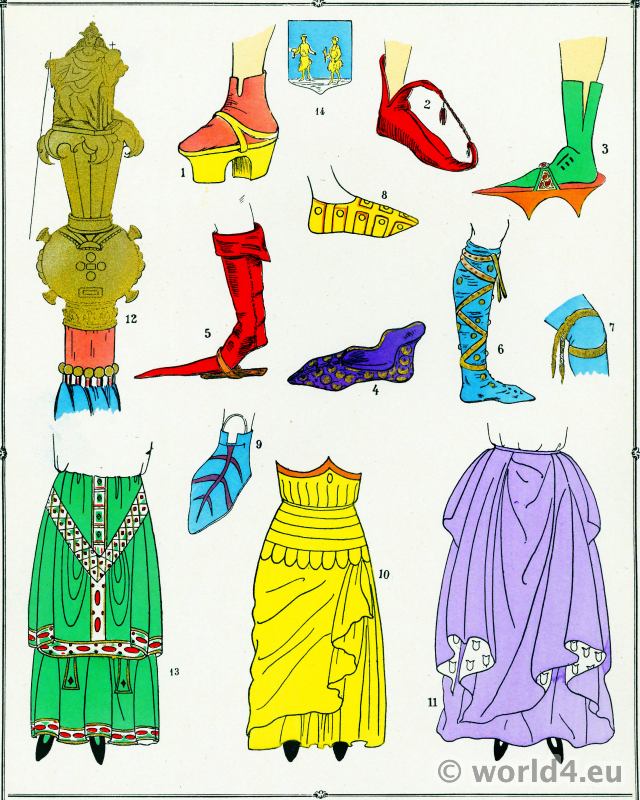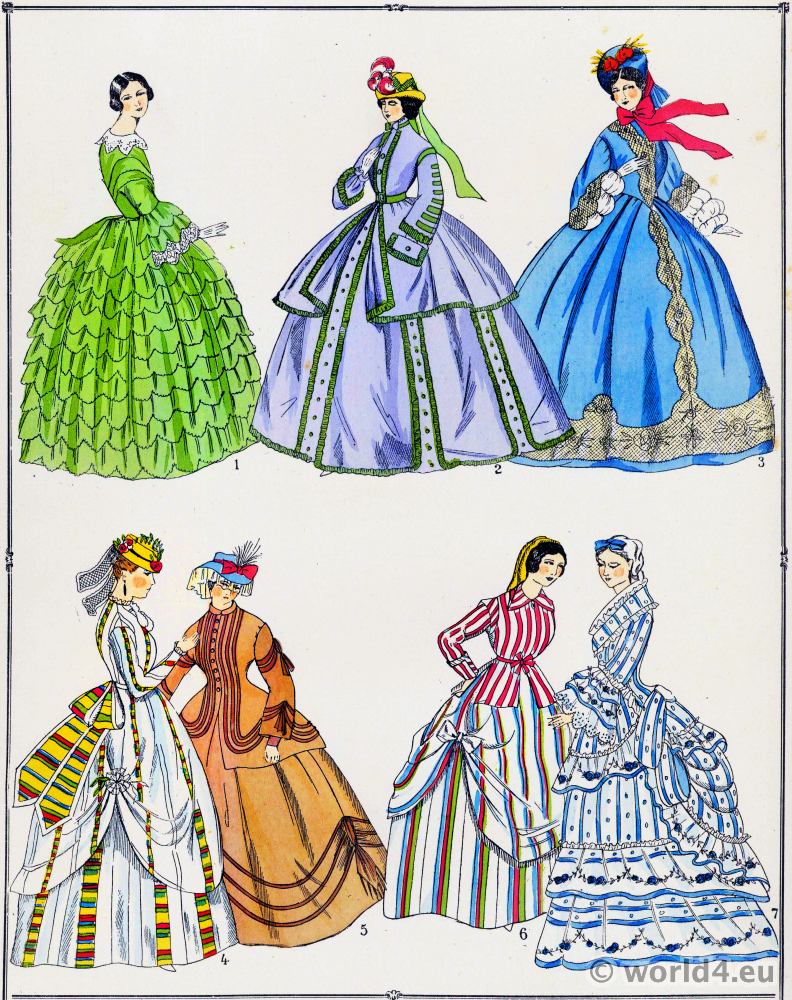Homme en chenille. Cabinet des Modes. 1785.
Cabinet des modes, ou Les modes nouvelles. (Ier Cahier. 15 Novembre 1785)
ELLE représente un jeune Homme en chenille. Chapeau rond à haute forme, cheveux treffés & noués en catogan. Frac de drap vert & boue de Paris, mêlés. Gilet rayé. Culotte soufre, très-ferrée, moulant la cuisse, avec trois boutons feulement. La jarretière nouée avec des cordons au lieu de boucles. Bas rayés, blanc & violet clair mêlés. Souliers noués avec des cordons.
Les Hommes portent, lorsqu’ils font en chenille, le chapeau en Jocquay. Il a la forme carrée, de 4 pouces 6 lignes à 5 pouces de profondeur; 3 pouces 6 à 9 lignes de bord, tombant en de dessous fur le devant & fur le derrière; garni d’un ruban & d’une boucle d’acier à pointes de diamans, fous laquelle on met quelquefois une rosette de ruban noir.
Bas de fantaisie, lorsqu’on est en chenille.
Bas rayés, blanc & boue de Paris mêlés.
Violet & gros vert mêlés.
Vert & boue de Paris mêlés.
Source: Cabinet des Modes, Ou Les Modes Nouvelles. Published by Buisson. Engraved by Georges Duhamel. Designed by Sébastien Le Clerc, le Jeune. Published in Paris 1785–88.

